The Atlas is an all-new range of versatile alloy gravel bikes from Focus that could reasonably be turned to everything from day-to-day gravel shredding to fully loaded touring.
Here in the UK, the bikes are also something of a post-Brexit unicorn – where other brands have increased prices, the Atlas arrives with a range that looks smart value for money.
As such, I would argue this is now one of the best value gravel bikes on the market if you’re looking for a bike that genuinely can do it all.
Focus Atlas gravel bike range overview

The Atlas range includes four bikes, all of which share the same alloy frame and carbon fork.
Three are equipped as typical gravel bikes – including the Atlas 6.8, which I have been testing – and the Focus Atlas 6.7 EQP rounds out the range.
The EQP model has a foot firmly planted in the touring bike camp, with a rear pannier rack, full-cover mudguards, a kickstand and dynamo lighting fitted as stock. It also gives an idea as to how versatile this frameset is.
As mentioned, I have been testing the Atlas 6.8, which comes in at £1,899. The Atlas will not be available in the US.
- Focus Atlas 6.7 EQP: £1,499 / €1,799 / AU$ N/A
- Focus Atlas 6.7: £1,699 / €1,599 / AU$2,499
- Focus Atlas 6.8: £1,899 / €1.999 / AU$3,099
- Focus Atlas 6.9: £ N/A / €2,499 AU$3,799
Focus Atlas 6.8 build
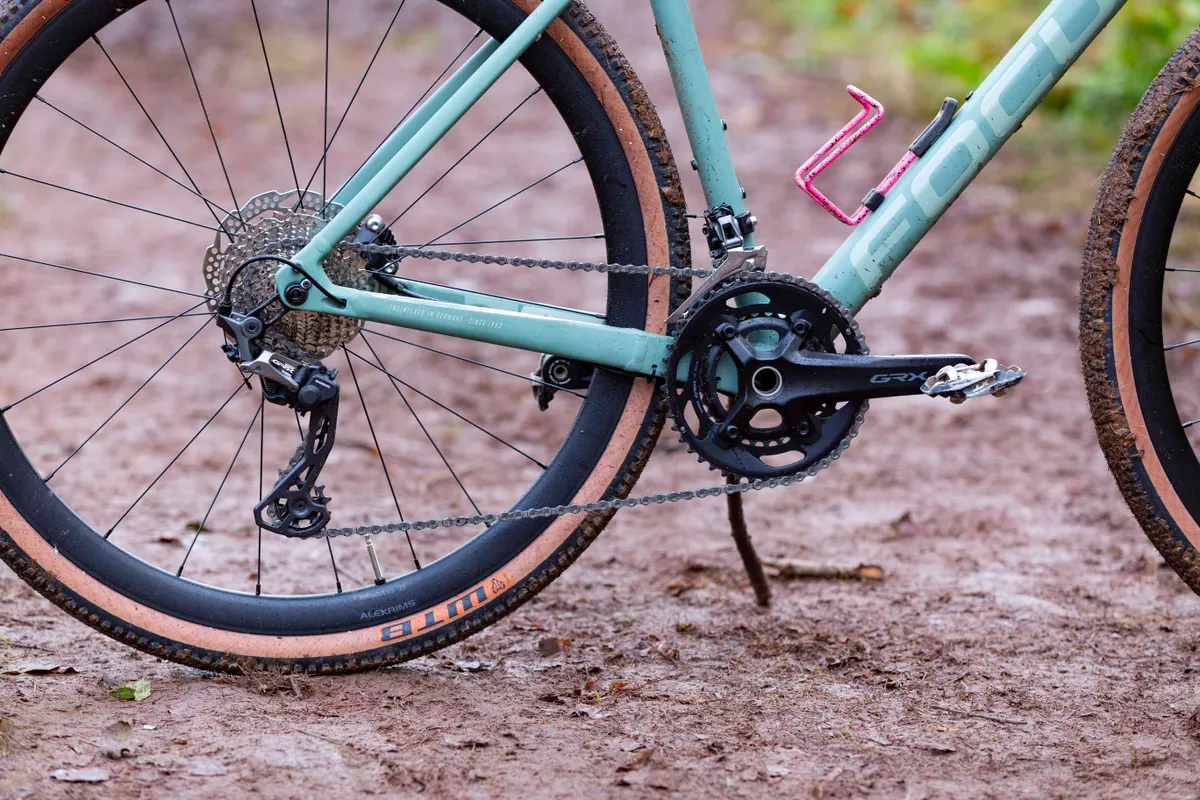
The Focus Atlas 6.8 is built around a mix of Shimano GRX RX600 and RX800-level groupset components. For the roadies among you, these are the equivalent of Shimano 105 and Ultegra-level parts respectively.
The wheelset sees Novatec 25 hubs laced to Alexrims Boondocks tubeless-ready alloy rims. These are fitted with 45mm-wide WTB Riddler tyres.
The cockpit components and seatpost are alloy own-brand Focus kit. The build is wrapped up with a WTB SL8 saddle.
Focus Atlas 6.8 ride impressions
The overall ride of the Focus is notably confident and controlled off-road, particularly in steep or rough terrain.
When blasting across rough fire roads, the front end remains calm, and only requires a light touch to keep things under control.
This stability also means the bike is almost jarringly easy to ride no handed – I cannot recall another gravel bike I have tested that is so carefree to ride sans-phalanges.
The bike also tracks nicely through corners, both on-road and off. It feels sure-footed, responsive and stable, and reacts easily to mid-line changes.
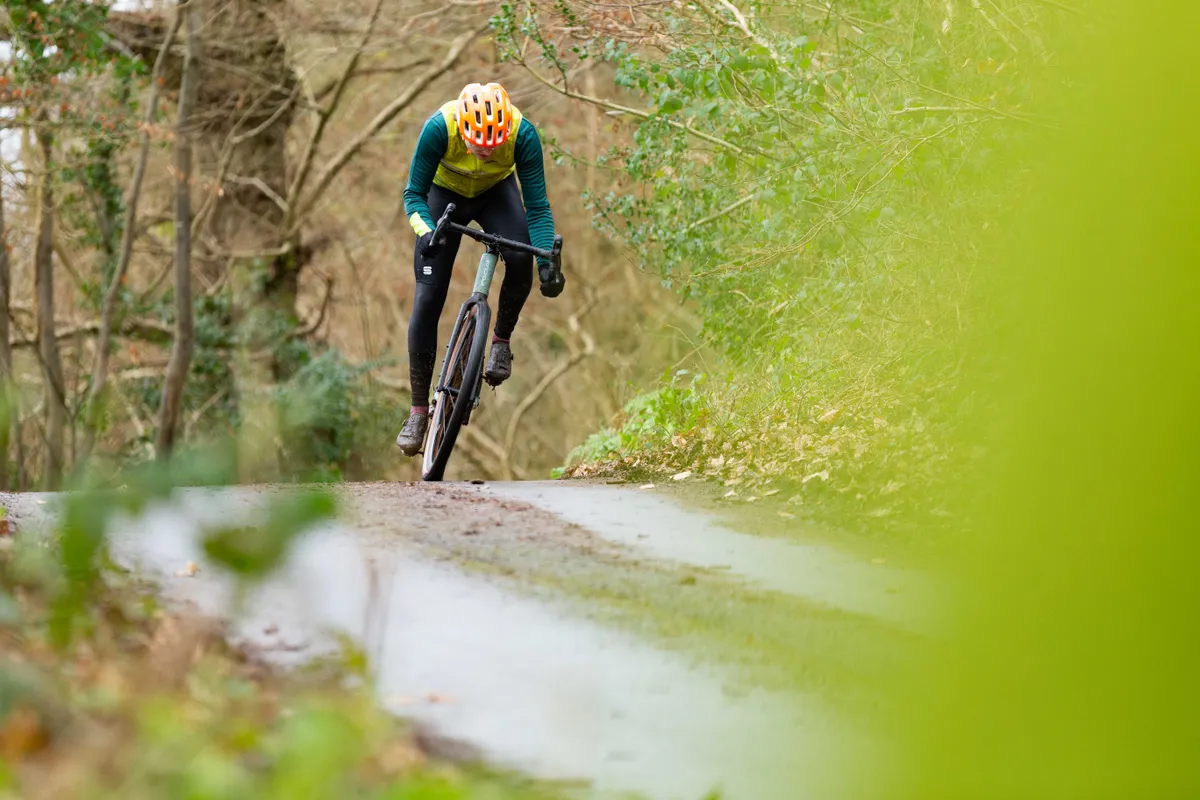
The tyres really help here. The WTB Riddler is a great tyre and transitions really nicely from the blocky centre section to the aggressive lugs on the outer edge of the tyre.
For gravel tyres, they also feel particularly good when riding on tarmac – they instantly felt familiar and confidence-inspiring with no awkward squirming or slipping as you lean over.
They aren’t the best in sticky mud, but that’s true of most do-it-all gravel tyres. A switch to something with a wider-spaced tread is advised if you live in a wet climate.
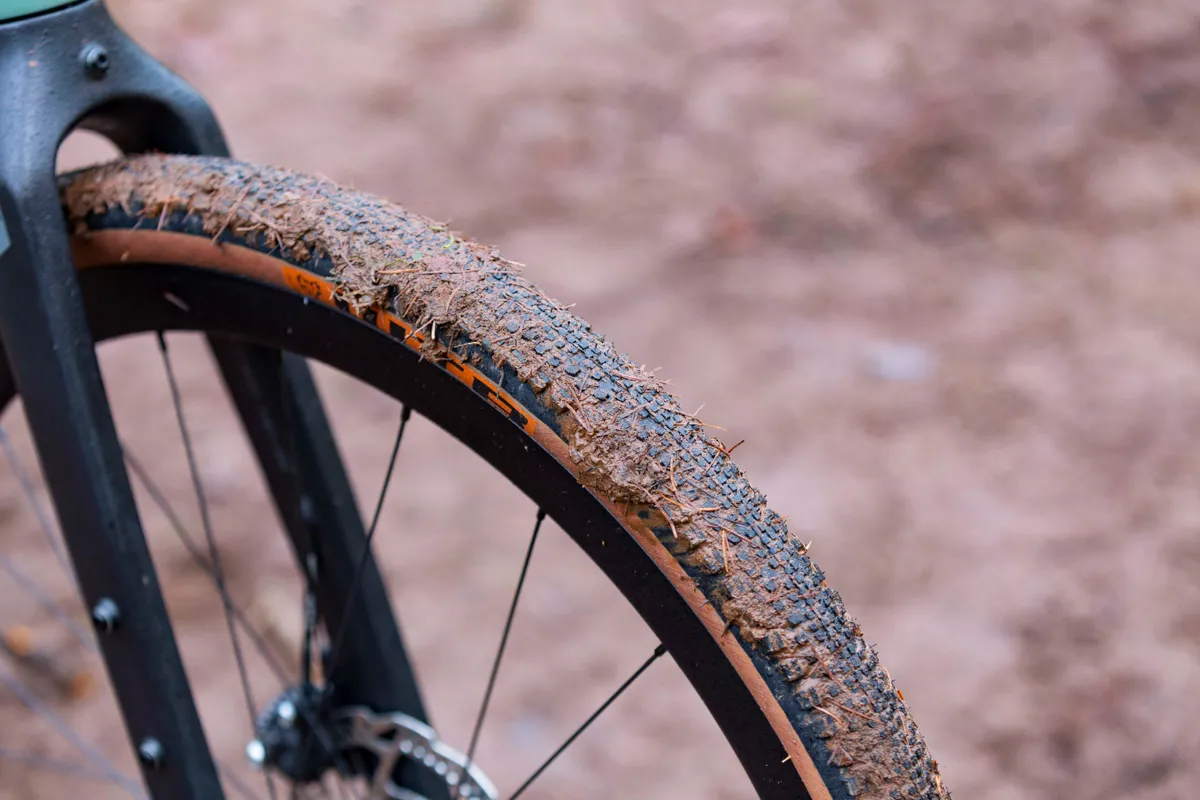
Looking at the bike’s geometry, everything I've mentioned so far adds up.
To start, the head angle is (in the context of mainstream gravel bikes) a notably slack 70.5 degrees across all sizes.
Combined with the Atlas 6.8’s stock 45mm-wide WTB Riddler tyres and the 50mm offset fork, this gives the bike a trail figure of 74mm. Trail (also known as caster) is the horizontal distance between where an imaginary line drawn through the steering axis meets the ground, and the point where tyre touches the ground.

65 to 80mm is considered to be a high trail figure, so this is at the upper end of the spectrum. For context, with 40mm tyres, an equivalent size Canyon Grail has 65.6mm of trail. You can read our recent Canyon Grail 6 review.
A high trail figure is credited with giving a bike a predictable and solid feel at high speeds, while also exhibiting a level of self-correcting steering.
(Bike Insights has a great explainer on the subject while our back-to-back testing explains how fork offset can affect mountain bike handling.)
I will add that I have never ridden any bike that actually feels ‘uncontrollable’, but notably stable or reactive bikes stand out, and the Atlas definitely falls into the former camp.
Long mountain bike-inspired geometry
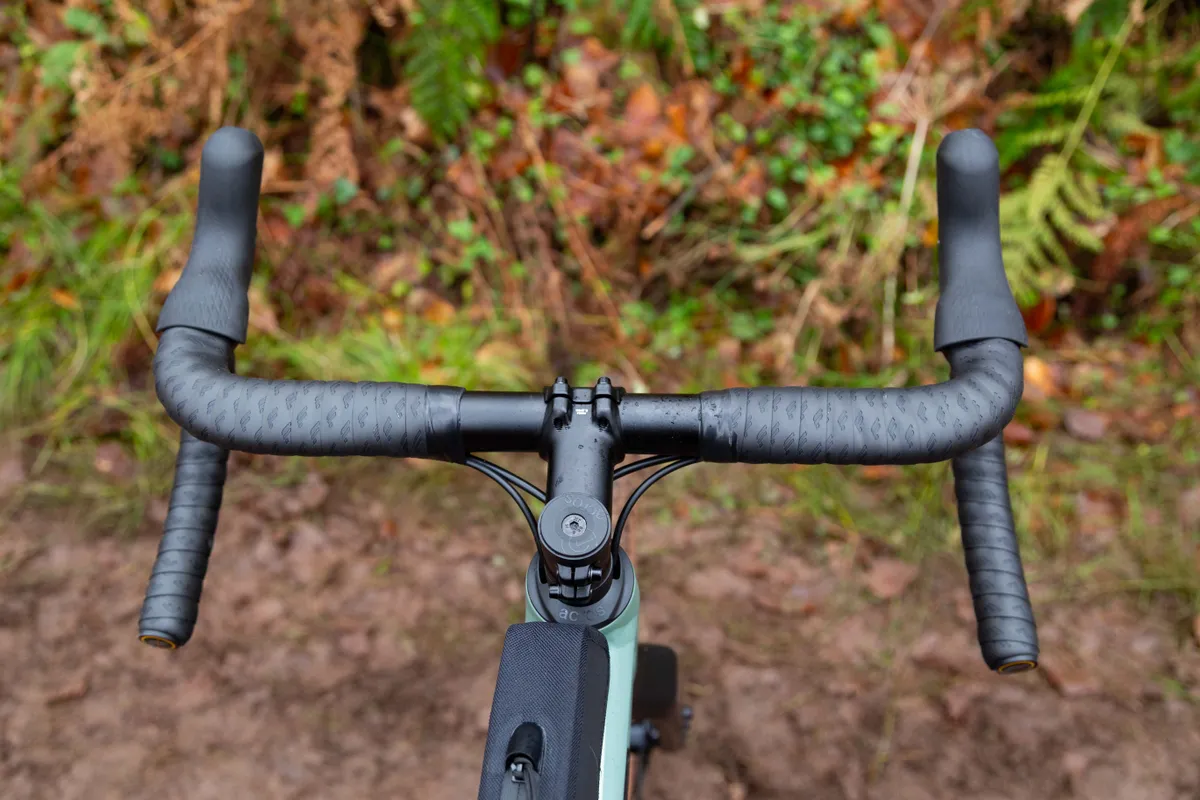
The front end is not the only place the geometry is progressive.
The reach of the Focus Atlas is stretched out to a chunky 410mm on my size large test bike. This is paired with a dinky 70mm-long stem.
For comparison, my last test bike (the 2021 Specialized Diverge) has a reach of 392mm and is fitted with a 90mm stem in an equivalent size.
18mm may not sound like a lot, but it makes a big difference on steep terrain – with your weight positioned further back on the bike, you are less pitched forward over the front wheel, making the bike feel less nervous and more controlled.

If your ego or tastes in bicycle aesthetics can’t handle the thought of running a 70mm stem on a drop-bar bike, most riders will be able to size down and fit a longer stem for a more traditional fit, but I would urge you to reconsider before doing so.
The stack is also fairly generous (615mm on a size large), so most riders will be able to get a relaxed and upright riding position for pleasant pootling.
Comfortable, but still stout

Despite the fat 45mm-wide tyres, the front end feels slightly dull on larger hits.
The stout fork legs are built to carry luggage and, compared to a more svelte fork, don’t offer much in the way of give. The deeper-than-average alloy wheelset may also contribute to this harsh feeling.
I could have dropped a few PSI from my front tyre and, given the bike’s cavernous tyre clearance, you could also fit a larger tyre if you’re a particularly delicate flower and require the squashiest front end possible. Focus quotes a maximum tyre clearance of 45mm with 700c wheels, but I measure 15mm of additional clearance on either side of the tyre at the fork.
If you’re dead-set on taking a gravel bike on MTB-appropriate terrain, you can also size down to 650b wheels, though Focus hasn't said how much this will increase clearance by.
On the other hand, the stiff forks (and the long reach) contribute to a stable feel under heavy braking and it’s really hard to force the bike into even an intentional endo.
Boost for gravel is now a thing

Focus has adopted Boost axle spacing on the Atlas.
Though it’s essentially the de facto standard on mountain bikes, Boost is rarely seen on production gravel bikes.
As a reminder, the most common road/gravel thru-axle standard is 142 x 12mm at the rear paired with 100 x 12mm up front, whereas Boost spacing is 148 x 12mm rear and 110 x 15mm front.
Focus switches things up a bit with a 12 x 110mm front axle but, in any case, it's possible to convert a standard 15 x 110mm axle to 12mm with an adaptor.
As far as I am aware, there are no Boost gravel wheelsets on the market, so this limits you to using mountain bike wheelsets on this bike (or building up road/gravel rims with mountain bike hubs).
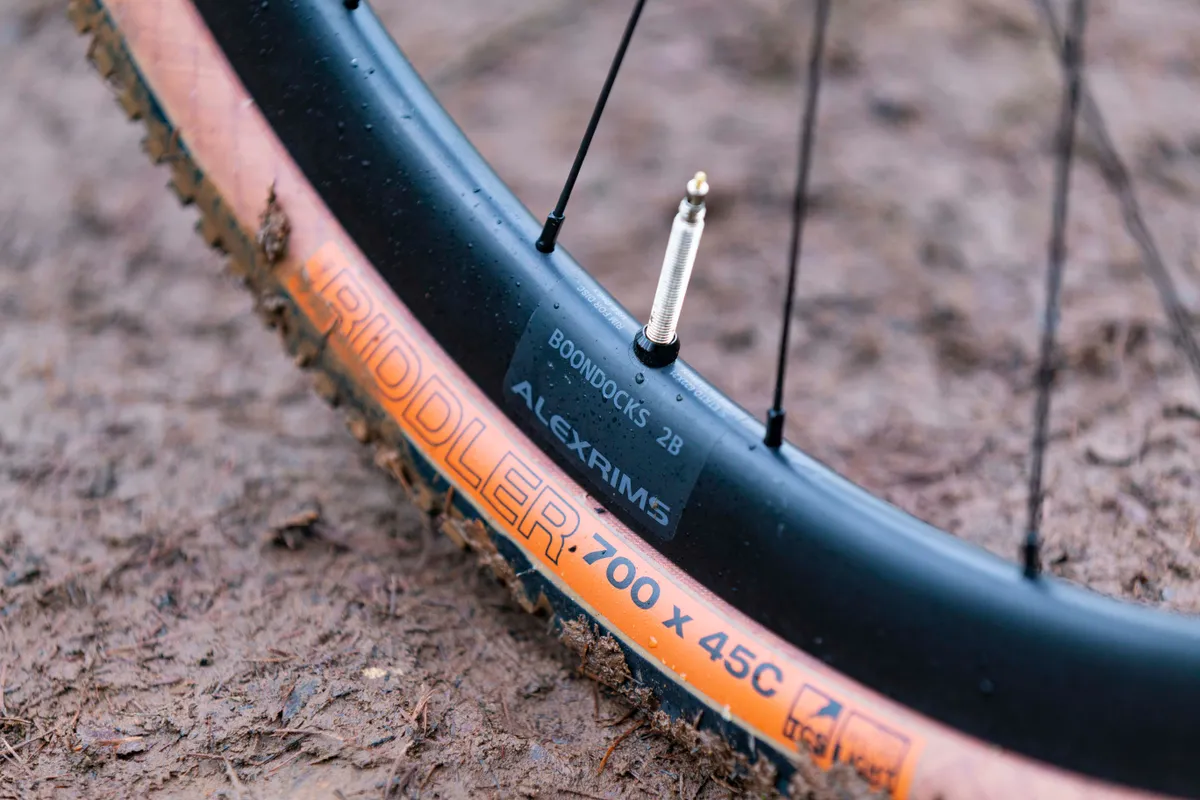
I don’t think this will be a problem for most riders.
You’re very unlikely to want to slap a set of 75mm-deep aero whoosh wheels onto this bike. The mountain bike wheelset market is also packed full of affordable and lightweight options, many of which will better-suit the additional width of gravel tyres.
Nonetheless, if you already have a set of posh gravel wheels or a supplementary 650b wheelset, this may be a bit of a bummer because it is not possible to convert standard hubs to Boost without it being a bit of a bodge.
Is this a sign of things to come? Will other manufacturers adopt Boost, further narrowing the gap between road and mountain bikes? I suspect so, but please don’t shoot the messenger.
The stock wheelset warrants no complaints in any case. The Alexrims Boondocks rims are deeper than average at 32mm-ish deep, and are built with a sensible high spoke count. I have no doubt they’ll stand up to years of abuse.
Bikepacking and touring friendly features
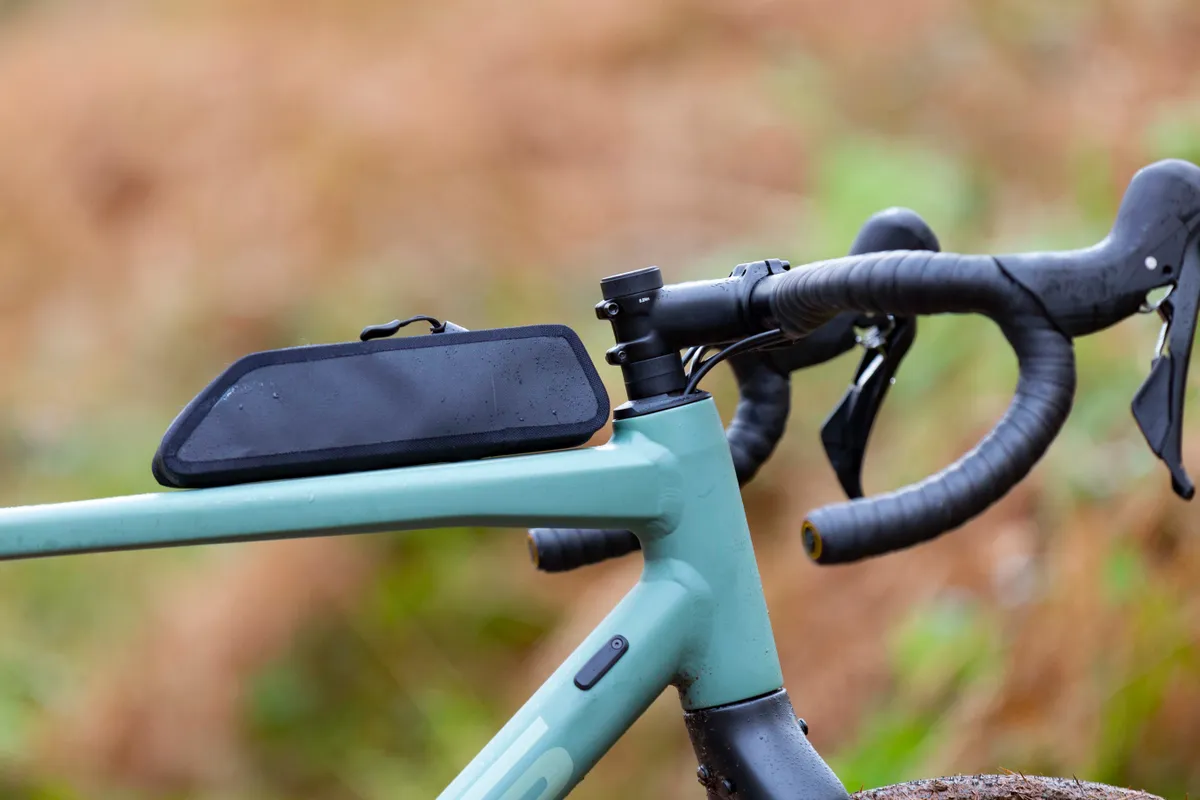
All cables on the bike are internally routed through a hole on the top cover of the headset.
This looks clean but, more importantly, it will make fitting bikepacking bags way easier with no cables to foul your cycling satchels. There are also provisions to run a dropper post.
There is a set of triple bolt mounts on each fork leg. These are rated to carry up to 3kg each. If you require more luggage carrying capacity, the fork is also rated to have a traditional front pannier rack fitted
As well as front and rear luggage mounts, there is also the new de-facto top-tube feed bag mounts just behind the head tube.
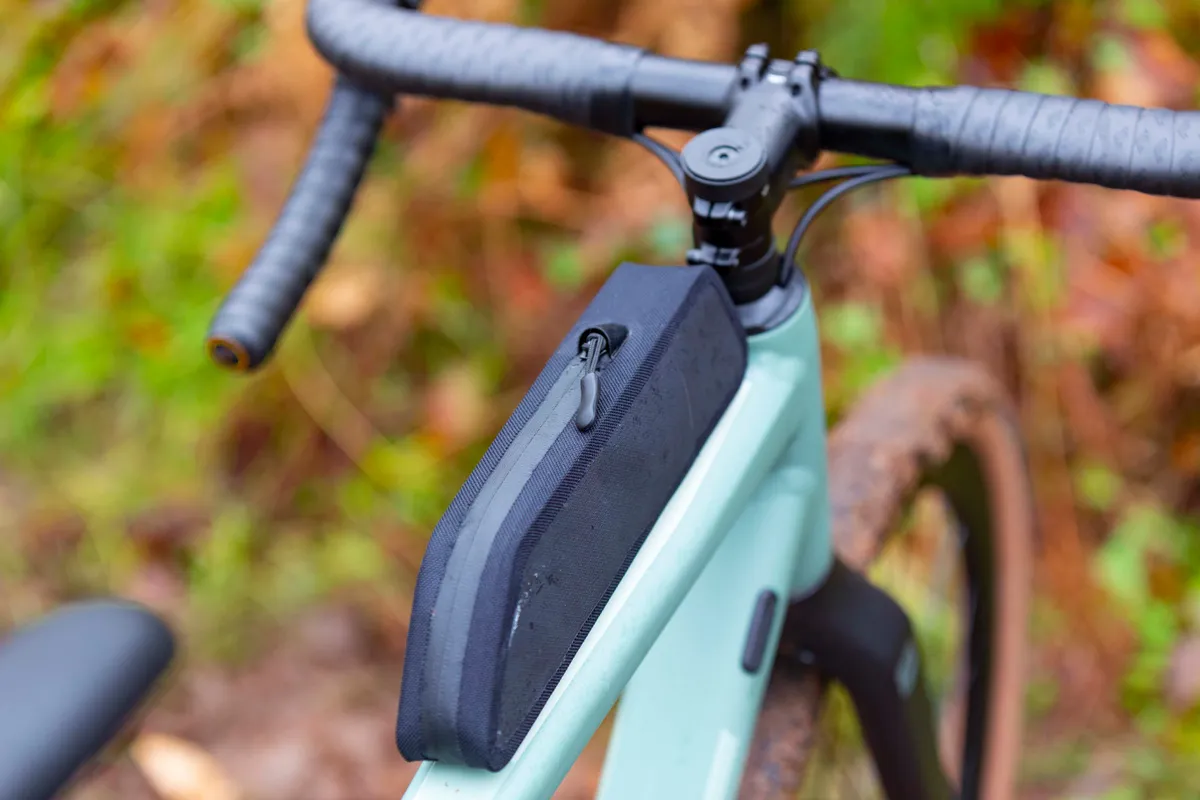
My test bike came with a neat matching bag from Focus. This will be available as an aftermarket accessory, but be warned that anything placed in the bag rattles on the plastic stiffening strip and bolts on the bottom.
A small strip of packing foam would stop this, but it’s annoying it happens in the first place and seems like an obvious oversight.
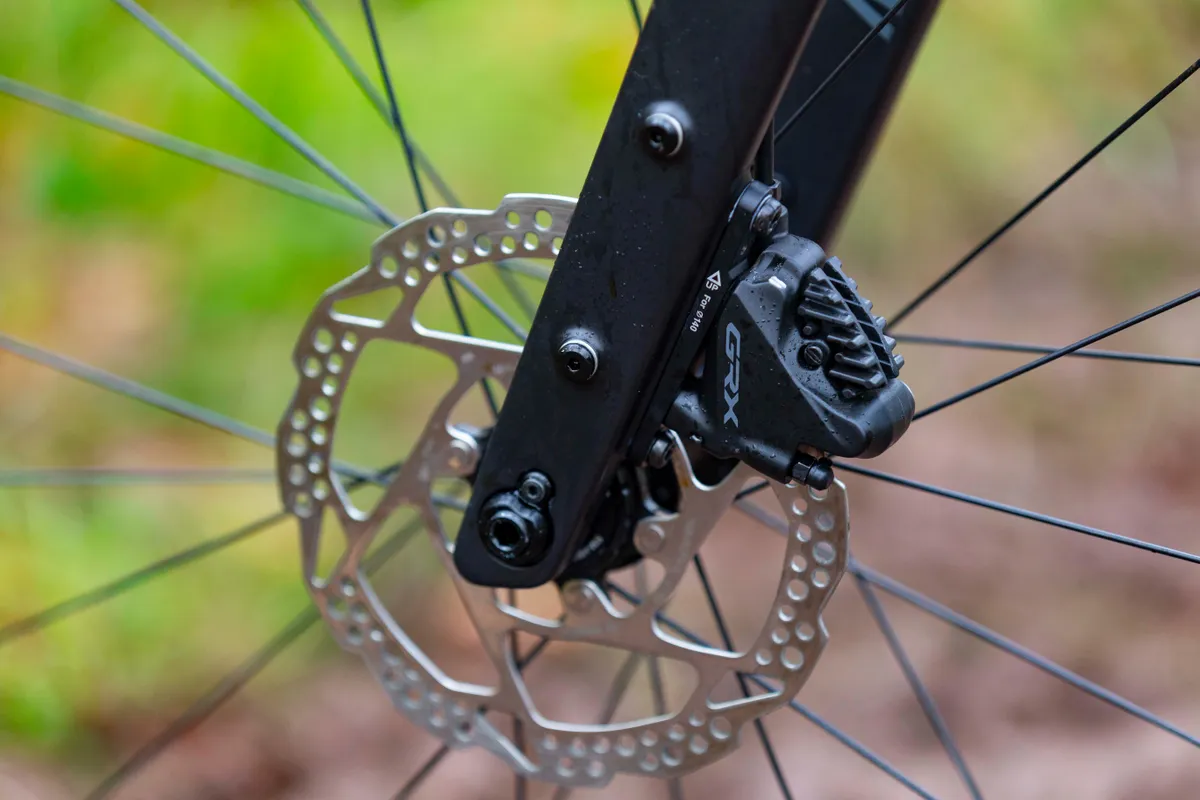
Focus produces a matching set of mudguards and a pannier rack for the bike. If you don’t like the look of Focus’s kit, you shouldn’t have any trouble finding and fitting a standard option.
If you want to go full practical, there is even the option to fit a kickstand with a replacement dropout. We love kickstands here at BikeRadar and it would be worth considering fitting one to any touring bike.
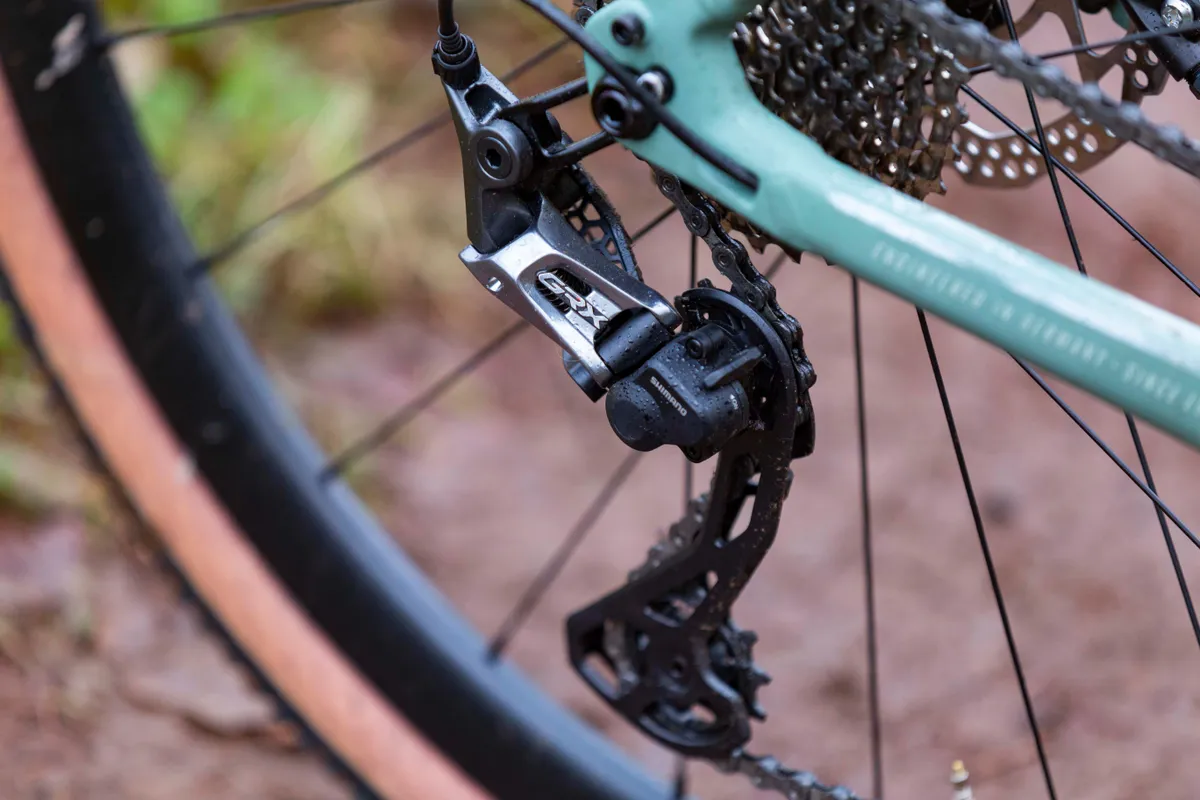
I cannot level complaint at the bike’s Shimano GRX groupset, it offers ample gearing range for even heavily loaded touring, matched with a sufficient top-end for fast road riding.
I won’t say too much on GRX because our very own Matthew Loveridge will be delivering a full long-term review on this very soon. Stay tuned.
The handlebars are an understated highlight of the bike’s spec. They are suitably wide (42cm on a size large) without being excessively so; the flare in the drops is subtle, which makes them more pleasant when riding on the road; the flattened tops aren’t excessively broad, and the ramps are roomy enough to offer multiple usable hand positions.
On the other hand, I’m not a huge fan of the WTB SL8 saddle. I found it to be a little bit narrow and soft for my picky buttocks, but that’s down to personal preference.
In its defence, I have done a few rides without padded bib shorts on this bike when I’ve just been noodling about on it and the soft top was appreciated.
Focus Atlas vs. Canyon Grail (and others)
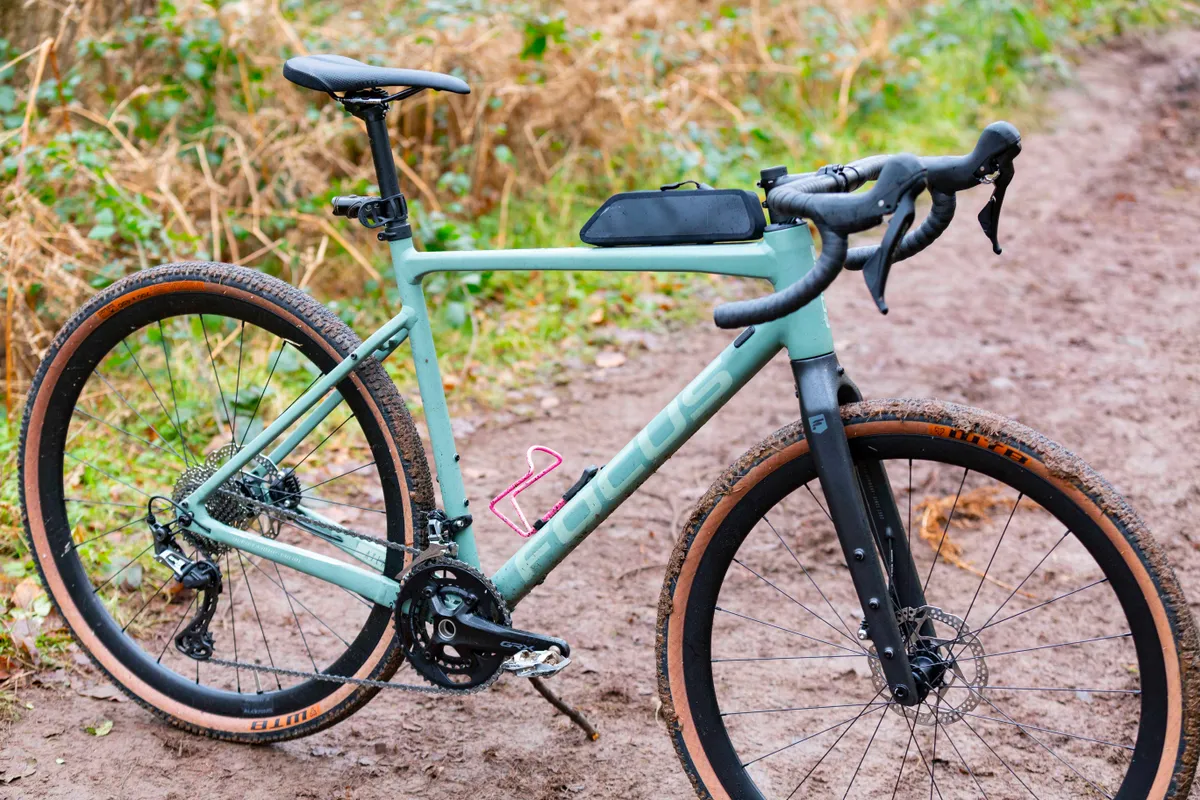
Most manufacturers have a bike similar to the Atlas in the range, but in terms of specs, price and even aesthetics, I think it’s closest competitor is the Canyon Grail.
The spec of the Atlas 6.8 is almost identical to the 2021 Canyon Grail 7, though you get a name-brand DT Swiss wheelset on the Canyon.
This is where the pricing of the Atlas stands out – post-Brexit price increases have pushed the cost of the Canyon up to £2,099, whereas the Focus Atlas 6.8 is £1,899.
Looking at other brands, the Diverge Comp E5 (£2,200) is probably the closest fit in spec from Specialized.
However, that particular bike also features the (excellent) FutureShock suspension system, so the Elite E5 (£1,899) is the closest direct comparison. This sees a downgrade to a mix of GRX 400-level components, so again the Focus comes ahead.
Looking at Cannondale, the Topstone 1 offers a similar spec for £1,800, but sees a downgrade to an FSA Omega crankset. It also loses out on some of the overall versatility, with far fewer luggage mounting points, but that won’t be a dealbreaker for many riders.
Of course, the right bike for you will depend on exactly what you're after, but the point here is that the Atlas arrives as a new gravel bike that is excellent value for money in today's market.
Focus Atlas 6.8 review conclusion
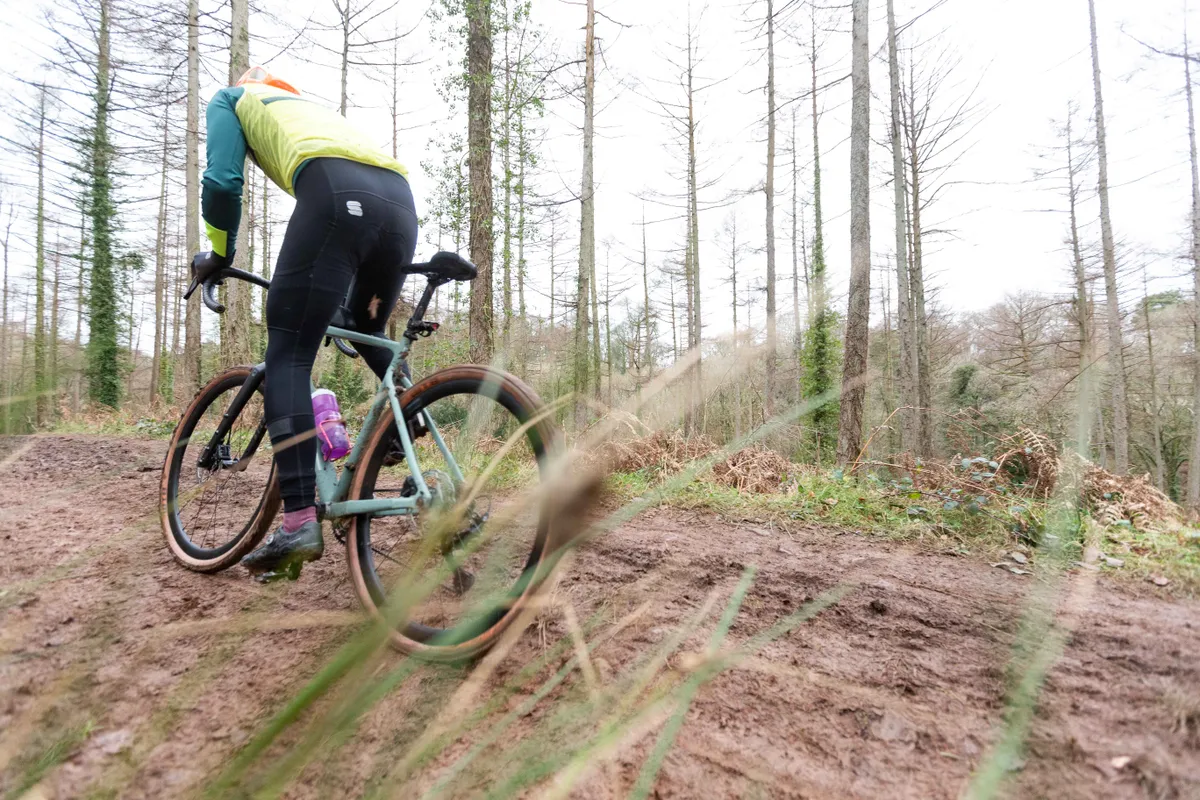
In summary, compared to the competition from mainstream brands, the Focus Atlas 6.8 represents excellent value for money and a more versatile package than most.
With generous tyre clearances, more mounting points than you’ll ever know what to do with and competent shred-friendly geometry, you really could build this bike up as just about anything.
Whether you’re smashing about singletrack or cruising along bike paths, it’s also simply great fun to ride.
Product
| Brand | focus |
| Price | 1899.00 GBP |
| Weight | 10.8500, KILOGRAM (Large) - |
Features
| Fork | Carbon, disc, 110x12 mm thru axle, flat mount 160/160 mm, internal brake cable routing, multiple mounting points |
| br_stem | Focus aluminium, 31,8 mm, 6 degree |
| Tyres | WTB Riddler, 700 x 45mm, folding |
| br_brakes | Shimano GRX RX600 |
| br_cranks | Shimano GRX RX600 |
| br_saddle | WTB SL8 |
| br_shifter | Shimano GRX RX600 |
| br_cassette | Shimano 105, 11-34 |
| br_seatpost | Focus aluminium, 27,2 mm, 350 mm, 0 mm set-back |
| br_gripsTape | Focus Bartape SL |
| br_handlebar | Focus aluminium, 31,8 mm, drop: 116 mm, reach: 74 mm, flare: 10 degree |
| br_availableSizes | XS, S, M, L, XL |
| br_rearDerailleur | Shimano GRX RX810 |
| br_frontDerailleur | Shimano GRX RX800 |
